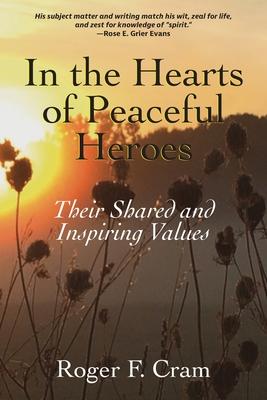This book is an in-depth study of how heroes of peace use compassion in
the face of adversity. It is the research of how special heroes successfully
address hatred with peace, how their calmness softens the chaos surround-
ing them, and why they always maintain the dignity of their adversaries
throughout their enemies' defeat and recovery. Heroes of peace typically
react to a crisis with positive and compassionate characteristics-that is
one of the credentials that makes them heroes of peace.
This book is rich in heroic stories based on little-known sources of
information discovered through my research. These incredible stories are true, often appearing surre-
al, and interlace this book with unbelievable ventures rarely found in any
media other than from the personal exploits of the heroes themselves.
I researched, discovered, and taught these heroic values in college
courses for over a decade, and my students and I studied extensively the
inspiring values used by magnificent people to guide their critical deci-
sions. We did not study these same heroes when they were not performing
at their best. No human being is perfect and without flaws. No person can
go through life without committing careless errors. Gandhi had bad days.
Please understand this book is not a study of perfect heroes of peace-
there are none. This book is a study of the values and thought processes of
(a) magnificent world heroes of peace (b) when they were performing at
their best-what wonderful and proven examples of outstanding human
conduct to study.
I was interested in HOW heroes of peace achieved their remarkable
deeds instead of what they accomplished. Where could I find such world
heroes of peace to study? How could I interact with enough of them and
long enough to learn the values in their hearts?
I started my journey in 2002 by first researching the heroic Tuskegee Airmen,
a group of young black men and women who served as pilots and support staff
for the U.S. Army Air Corps in WWII. At that point, the U.S. military used
blacks only as mess cooks, laborers, and janitors. They were not allowed to be
pilots. A program was started by President Roosevelt to see if blacks could
be trained to fly military aircraft; thus, a flight school for blacks was started
in Tuskegee, Alabama. This positive goal was deliberately undermined by
many whites in authority to show that blacks did NOT possess the intelligence, courage, or ability to
efficiently fly or maintain military aircraft. However, despite cruel discrim-
ination, inferior equipment, unreasonable standards, restricted rights, lim-
ited privileges, and insufficient support, the Tuskegee Airmen and Women
succeeded with unprecedented achievements still unmatched today. How
did they do this?
While I was researching the Tuskegee Airmen, I expanded my project and
studied well-known heroes like Nelson Mandela, Mahatma Gandhi, John
Robert Lewis, and Mother Teresa. I also traveled over seven years and
walked with unknown heroes living in poverty throughout the townships
in South Africa and the poor mountain villages in Nicaragua. The heroes
of peace I found dwelling amid the impoverished were indeed inspiring.
They treated the indigent with dignity, the disrespectful with respect. They
performed with excellence for those believing them incompetent and
formed an alliance of peace and respect for those plotting their failure.
I did discover a commonality among the crisis-management meth-
odologies and values of the inspiring world heroes I researched. There IS
an effective and peaceful means of managing a crisis calmly. This, to me, is
awe-inspiring.
